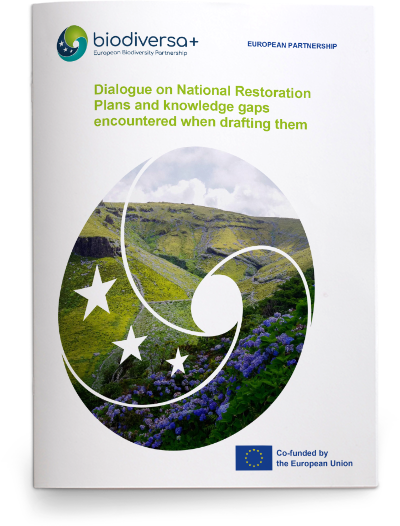“Dialogue on National Restoration Plans and knowledge gaps encountered when drafting them”
Published: October 2025 | DOI: 10.5281/zenodo.17303640
In May 2025, representatives from 20 EU Member States met in Paris to discuss the challenges and opportunities of drafting their first National Restoration Plans (NRPs), the cornerstone of the EU’s Nature Restoration Regulation (NRR), to be submitted to the European Commission by September 2026. Following up on the 2024 edition on “Restoring Biodiversity, Habitats and Ecosystems”, the dialogue offered a timely platform for countries to exchange experiences and identify common knowledge gaps, while engaging with experts from the BiodivRestore Knowledge Hub, which supports the implementation of the NRR by strengthening the scientific basis for restoration across Europe.
Key insights
Participants highlighted both encouraging progress and systemic challenges that must be addressed to ensure ambitious and coherent restoration planning across Europe.
- Data and knowledge gaps remain critical.
Many Member States face difficulties establishing robust baselines and defining Favourable Reference Areas (FRAs) due to outdated or incomplete habitat and species data, especially outside Natura 2000 areas, and for marine and freshwater ecosystems. Several participants emphasised the need for centralised national databases to track ongoing restoration projects and the potential for citizen science to complement official monitoring. - Capacity and coordination are under strain.
Limited staff capacity, unclear institutional roles, and overlapping responsibilities continue to hinder progress. Strengthening inter-ministerial collaboration, clarifying mandates between agencies, and developing national expert and stakeholder networks (similar to Biodiversa+ national hubs) were identified as key steps forward. - Stakeholder engagement and communication need strengthening.
While consultation processes are advancing, many countries still face challenges in engaging local actors and primary production sectors. Participants agreed on the importance of giving stakeholders a stronger voice in the design and implementation of NRPs, and of communicating more effectively about the multiple benefits of restoration and the costs of inaction. - Funding alignment is essential.
Participants called for better coherence between EU policies and funding mechanisms, notably the Common Agricultural Policy (CAP), to ensure long-term support for restoration activities. - Opportunities for collaboration are growing.
The NRR opens new space for cross-border cooperation, especially for countries sharing terrestrial or marine ecosystems. Participants also called for NRPs to be flexible and adaptive, allowing for future adjustments as new data, methods, and feedback become available.
Building on the dialogue’s findings, the BiodivRestore Knowledge Hub will develop operational guidelines, policy briefs and knowledge papers to help policymakers and practitioners translate science into action for effective, large-scale restoration.
